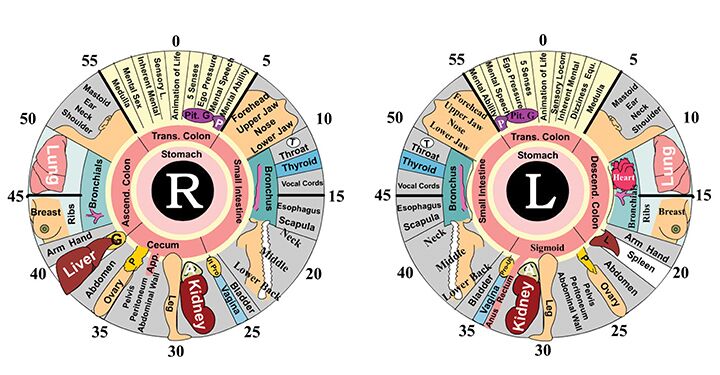The iris in your dog’s eye, known as the circle of color, can serve as a looking glass into your dog’s holistic health. Iridology for dogs is a science where practitioners use the iris to assess your dog’s current condition, genetic predisposition to disease, and potential future health issues. Your dog’s iris is complex and contains a large amount of fibers connected to every nerve, muscle, and organ via the brain and spinal cord.
Through analyzing subtle changes in the iris such as pigment discolorations, eyespots, lines, and textures, iridologists can tell about your dog’s tissues, systemic health, toxic load, and inherent strengths and weaknesses. Iridology for dogs teaches that imbalances in the body cause rings, spots, and other pigment changes that correlate to your dog’s organs and tissues, as well as toxins, chemicals, medications, and heavy metals. A skilled practitioner focuses on the cause of your dog’s condition rather than the illness or symptoms. They can help detect physiological imbalances before symptoms appear, giving you time to adjust your dog’s diet, supplementation, and environment. Iridology can also determine if a current treatment is working. After an iridologist identifies abnormalities in your dog’s iris and their location, they compare it with iris charts. Like reflexology and the foot, iridology charts divide the iris into left and right sides and break it down into different zones related to specific body areas. The top of the eye is related to the head and upper body regions like the brain, chest, neck, and heart. The center of the eye is connected to the digestive organs and stomach. The lower half of the iris represents the legs, reproductive organs, hips, and tail regions. Iridology avoids definitive diagnosis and faces strong opposition in the evidence-based medical community. It is not intended to stand alone but is a complement to natural veterinary medicine, holistic care, and nutrition. Evidence-based medicine also opposes homeopathy, acupuncture, Traditional Chinese Medicine, and chiropractic care. If you can’t see a practitioner in person, you can work with an iridologist on the Internet or phone by sending appropriate photos of your dog’s eyes and completing a detailed history questionnaire if you have a cooperative pup, a camera with at least five megapixels, and a flash.Iridology is a preventative healthcare approach that can help identify imbalances in a dog’s body and restore strength and vitality. Based on the assessment outcome, an iridologist may recommend seeking veterinary care, making dietary changes, or using preventative herbs and supplements.
Many iridologists who specialize in studying the human iris also extend their expertise to dogs, cats, and horses. It’s crucial to seek someone with extensive knowledge and experience in this field. Don’t hesitate to work with professionals from countries where iridology is respected, such as Germany, England, Sweden, and Austria. Traditional Chinese Medicine, naturopathy, and homeopathy are sciences that consider the subtle energies within the body, the interconnectedness of nerves and tissues, and the changes that occur before diseases become chronic and degenerative. Iridology should complement, not replace, holistic veterinary care. It’s an exciting approach to preventative healthcare that can help maintain your dog’s health by identifying and addressing imbalances early on.

